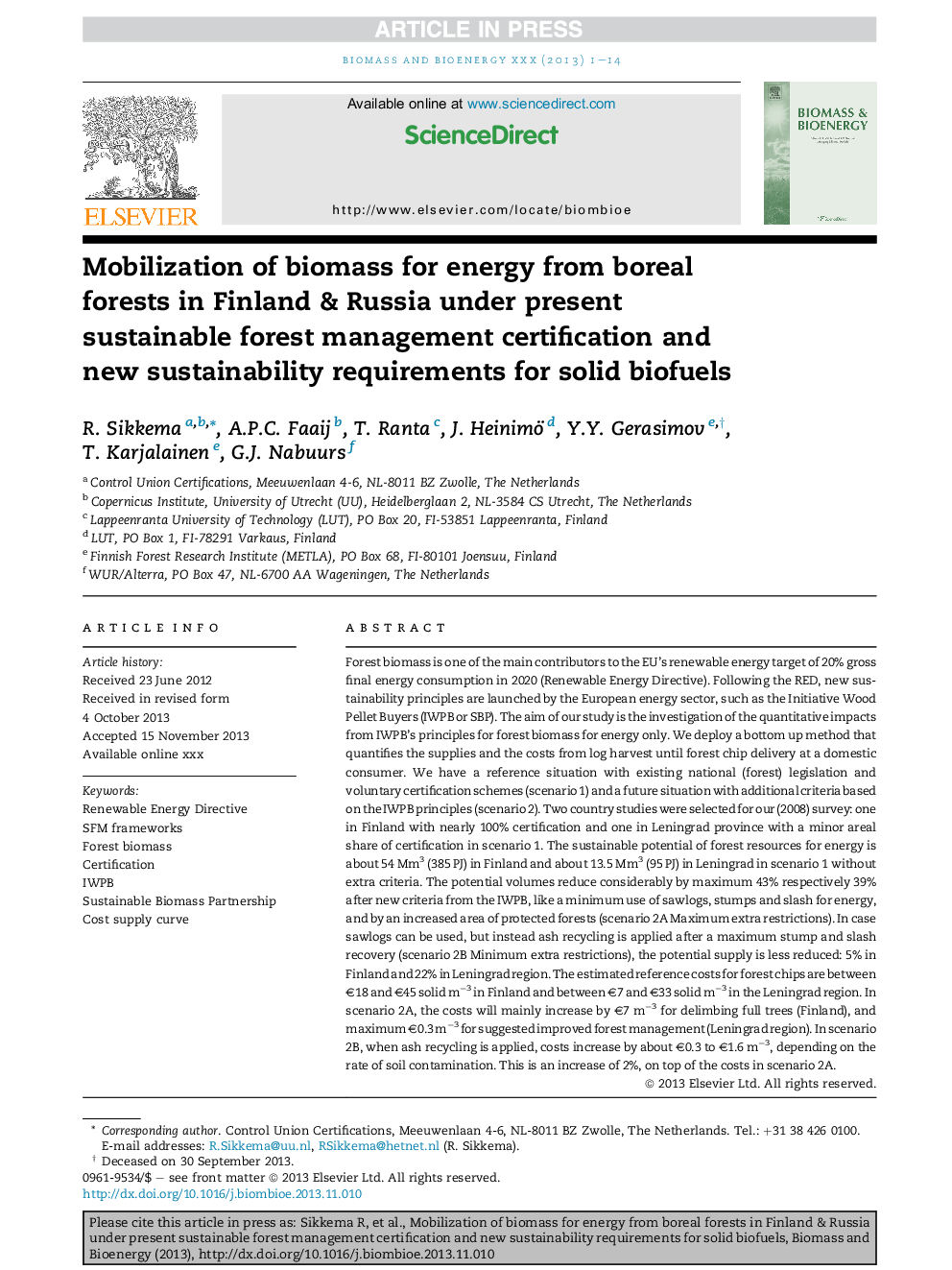| Article ID | Journal | Published Year | Pages | File Type |
|---|---|---|---|---|
| 676801 | Biomass and Bioenergy | 2014 | 14 Pages |
Abstract
Forest biomass is one of the main contributors to the EU's renewable energy target of 20% gross final energy consumption in 2020 (Renewable Energy Directive). Following the RED, new sustainability principles are launched by the European energy sector, such as the Initiative Wood Pellet Buyers (IWPB or SBP). The aim of our study is the investigation of the quantitative impacts from IWPB's principles for forest biomass for energy only. We deploy a bottom up method that quantifies the supplies and the costs from log harvest until forest chip delivery at a domestic consumer. We have a reference situation with existing national (forest) legislation and voluntary certification schemes (scenario 1) and a future situation with additional criteria based on the IWPB principles (scenario 2). Two country studies were selected for our (2008) survey: one in Finland with nearly 100% certification and one in Leningrad province with a minor areal share of certification in scenario 1. The sustainable potential of forest resources for energy is about 54 Mm3 (385 PJ) in Finland and about 13.5 Mm3 (95 PJ) in Leningrad in scenario 1 without extra criteria. The potential volumes reduce considerably by maximum 43% respectively 39% after new criteria from the IWPB, like a minimum use of sawlogs, stumps and slash for energy, and by an increased area of protected forests (scenario 2A Maximum extra restrictions). In case sawlogs can be used, but instead ash recycling is applied after a maximum stump and slash recovery (scenario 2B Minimum extra restrictions), the potential supply is less reduced: 5% in Finland and 22% in Leningrad region. The estimated reference costs for forest chips are between â¬18 and â¬45 solid mâ3 in Finland and between â¬7 and â¬33 solid mâ3 in the Leningrad region. In scenario 2A, the costs will mainly increase by â¬7 mâ3 for delimbing full trees (Finland), and maximum â¬0.3 mâ3 for suggested improved forest management (Leningrad region). In scenario 2B, when ash recycling is applied, costs increase by about â¬0.3 to â¬1.6 mâ3, depending on the rate of soil contamination. This is an increase of 2%, on top of the costs in scenario 2A.
Related Topics
Physical Sciences and Engineering
Chemical Engineering
Process Chemistry and Technology
Authors
R. Sikkema, A.P.C. Faaij, T. Ranta, J. Heinimö, Y.Y. Gerasimov, T. Karjalainen, G.J. Nabuurs,
